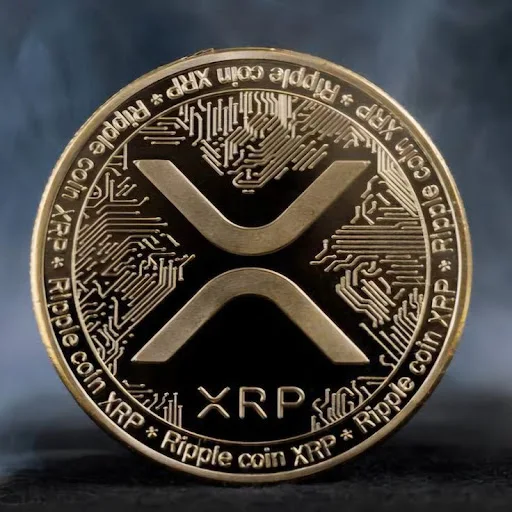Ripple’s XRP Escrow Release Strategy Changes: What It Means for the Blockchain Market
Introduction:
Ripple has long maintained a predictable monthly schedule when it comes to unlocking XRP from escrow. However, recent changes to its token release strategy have caught the attention of both blockchain enthusiasts and XRP holders. Since March 2025, Ripple has shifted away from its established pattern, creating a new trend in the way XRP tokens are introduced into circulation. This change could have significant implications for the XRP market and overall blockchain ecosystem.
Ripple’s Traditional XRP Unlocking Strategy
For years, Ripple has followed a transparent and consistent approach to releasing XRP into the market. Typically, the blockchain firm would unlock 1 billion XRP tokens from escrow on the first day of each month. This practice dates back to late 2017, designed to provide predictability and minimize market shocks related to sudden increases in token supply.
The locked tokens, held in Ripple’s escrow wallets, were meant to be gradually released over time to support network development, business operations, and liquidity. The mechanism was created with safeguards to ensure that the company did not flood the market, thereby maintaining a level of trust and transparency within the XRP ecosystem.
In a notable break from tradition, Ripple made a major change in March 2025 by not unlocking the scheduled XRP tokens on the first day of the month. Instead, the company delayed the release and opted to create new escrows from existing XRP holdings rather than accessing untouched tokens in its locked reserves.
This marked the first time Ripple used its own XRP reserves to create fresh escrow contracts, shifting how the circulating supply is managed. The change in release schedule continued through April and May, with Ripple still releasing 1 billion XRP tokens, but on different dates and under a new escrow structure.
The consistency of this updated approach suggests a deliberate move toward a revised long-term tokenomics strategy. Blockchain analysts speculate that this shift is aimed at offering greater flexibility in liquidity management while also adjusting to evolving market conditions and regulatory landscapes.
June’s Escrow Locking and XRP's Anniversary
On June 1, 2025, Ripple once again moved away from its traditional pattern. Rather than unlocking new XRP tokens from escrow, the company locked 670 million XRP back into escrow, continuing its recent strategy. Interestingly, this occurred as the XRP token marked its 13th anniversary, a symbolic milestone for one of the earliest digital assets in the blockchain space.
This move further solidifies Ripple’s intent to balance circulating supply with long-term growth and network health. The continued locking and strategic release of tokens align with the company’s mission to manage XRP's market presence responsibly.
Why Ripple Changed Its Escrow Policy
There are several potential reasons behind Ripple's new approach to managing XRP escrow releases:
1. Market Volatility Control
The cryptocurrency market remains highly volatile. By shifting its token release pattern, Ripple may be seeking to reduce predictable sell pressure that typically follows scheduled unlocks.
2. Strategic Liquidity Management
By creating escrows from its existing XRP holdings, Ripple gains more control over immediate liquidity, allowing for tactical deployment of tokens as needed—whether for partnerships, network incentives, or ecosystem investments.
3. Regulatory Alignment
As global regulations around digital assets tighten, Ripple may be adapting its internal processes to remain compliant with future financial disclosure and accounting standards.
4. Community and Investor Sentiment
Unpredictable unlocks reduce the risk of speculative market reactions, potentially supporting a more stable price environment and boosting investor confidence.
Ripple Discontinues Monthly XRP Reports
In addition to altering its escrow strategy, Ripple recently announced that it would no longer publish monthly XRP market reports. These reports had previously provided detailed insights into the company’s holdings, escrow status, and market activity.
Going forward, Ripple will provide sporadic updates via blog posts and social media channels. While some community members have expressed concern over reduced transparency, others see it as a shift toward agile communication that reflects the company’s new operational direction.
Ripple’s Current XRP Holdings and Escrow Status
According to Ripple’s last quarterly report (as of March 31, 2025), the company holds approximately:
4.5 billion XRP tokens in liquid form
37.1 billion XRP tokens locked in escrow
These figures offer a snapshot of Ripple’s current XRP distribution and highlight the significant role the company still plays in shaping XRP’s circulating supply and market behavior.
Market Impact and Community Reactions
The XRP community and broader blockchain ecosystem have responded with a mix of curiosity and cautious optimism. While some analysts are waiting to see how the market adapts to this new dynamic, others believe Ripple is taking a more modernized, data-driven approach to token release.
Some potential impacts include:
Reduced predictability of sell-offs or supply increases
Increased confidence from long-term holders and investors
Improved alignment between Ripple’s corporate goals and XRP’s utility
What This Means for XRP Investors
If you are an XRP holder or trader, it’s essential to stay informed about these ongoing changes. The new escrow release strategy could potentially reduce immediate price dips that used to occur right after large-scale unlocks. However, it also means that the circulating supply might grow in less predictable patterns, requiring closer attention to Ripple’s blog updates and blockchain analytics tools.
Understanding how Ripple manages its token holdings can provide a significant strategic advantage in the ever-evolving crypto market.
Conclusion
Ripple’s decision to alter its XRP escrow strategy in 2025 signals a new phase for one of the most prominent blockchain companies. Moving away from predictable token unlocks and discontinuing regular reports, the company is evolving its approach to liquidity management and community engagement.
Whether this change leads to greater price stability, improved investor trust, or sets a precedent for other blockchain projects remains to be seen. What is clear, however, is that Ripple is adapting—and XRP holders should pay close attention.

Comments
Post a Comment